Your menu is more than a list of food – it’s your best marketing asset. Good menu item descriptions can turn a dish into more than just food. They can make you feel something or give you something else. It can incite emotional responses, and help guide the diner through an experience. Great copywriting can distinguish your menu from competitors, can help justify pricing, and even drive revenue.
In one test, someone bought a bunch of small things and asked 100 writers to come up with stories about them. These stories were then put on eBay. The cost of the goods totalled $128. 74, and the items ended up selling for a net profit of $3,612. 51.
The takeaway? People like stories, and it sparks an emotional connection to the item, beyond the food itself. They’re buying the dish, but they’re also buying the story and experience behind the dish.
Successful restaurants (and writers) do this by playing with the consumers imagination. Adding adjectives to the names and descriptions of your items is the easiest way to make your menu more interesting, thought-provoking, or fun.
Baked: A food that was cooked in an oven, often resulting in a crispy outer coating.
Blanched: A food that was scalded in boiling water and then moved to cold water to stop cooking. Results in a softened texture.
Having a food item that looks blackened because it was dipped in butter and spiced up before being cooked in a hot pan
For a short time, food is fried in a little fat and then slowly stewed in a pot with a lid. Results in a seared, crispy exterior coupled with a tender interior texture.
Food that has been covered in a batter or breadcrumbs mixture and then baked or fried until the outside is crispy
Broiled: A food cooked with intense radiant heat, as in an oven or on a grill. Often results in a darkened appearance and crispy texture.
Caramelized: A food that has been cooked slowly until it is browned and becomes sweeter in taste.
Charred: Food that is grilled, roasted or broiled and gains a blackened exterior coupled with a smoky flavor.
Fried: Food that is cooked by submerging partially or fully into hot oil. Often results in a crispy or crunchy texture and golden color.
Glazed: A food that becomes moistened by having a flavorful coating dripped or brushed onto its surface.
A food that has been soaked in liquid with another ingredient to bring out the flavor of that ingredient
Poached: Food that has been cooked in nearly boiling liquid. Often results in a tender, moist texture.
Roasted: Food that has been cooked with dry heat in an oven or over a fire. Often results in a browned exterior and crisp coating.
Food that is seared is cooked in a small amount of fat until it turns caramelized. It can then be roasted, grilled, or cooked in some other way to finish. Results in a crisp outer texture and tender interior.
Smoked: Food that is cooked or preserved by long exposure to smoke from smoldering wood. Results in a distinctive, bold flavor.
Acidic: A food with a sharp taste. Often used to refer to tart or sour foods as well.
Salmon holds an esteemed spot on many restaurant menus With its supple, fatty texture and adaptable flavor, salmon lends itself to an array of preparations from raw to smoked to sautéed However, simply listing “salmon” on a menu does the fish an injustice. Thoughtful menu writing takes salmon description beyond the one-word basics to convey flavors, textures, cooking methods and ingredients that make each preparation unique. Read on to learn the nuanced art of writing tantalizing salmon menu descriptions.
Salmon’s Distinctive Flavor Profiles
When composing menu descriptions begin by considering salmon’s inherent taste and texture
-
Rich and buttery – Salmon’s high omega-3 content gives it a lush, velvety mouthfeel. “Buttery” and “silky” convey this essence.
-
Mildly sweet – Though fatty, salmon still retains a subtle sweetness from its oils. “Sweet” and “honeyed” characterize this.
-
Refreshingly bright – The fattiness balances refreshing notes. “Vibrant” and “bright” express this.
-
Delicately mild – Salmon has a delicate flavor that pairs well with other ingredients. “Mild” and “subtle” capture this.
Preparation Methods Impact Salmon’s Flavor
How the salmon is prepared influences the flavor and texture. Consider the differences:
-
Raw – Sashimi-style salmon has a pristine silkiness. “Velvety” and “buttery” describe the rawness.
-
Smoked – Smoking infuses deep, woodsy flavor and firms the texture. “Smoky” and “flaky” convey this.
-
Poached – Gentle poaching keeps salmon moist with pure flavor. “Tender” and “velvety” characterize it.
-
Grilled – The sear of grilling firms texture and adds char. “Smoky” and “juicy” express the taste.
-
Baked – Baking makes salmon extra fatty and soft. “Luscious” and “tender” work for baked.
-
Fried – Frying crisps the exterior and heightens richness. “Crispy” and “indulgent” capture fried salmon.
Ingredients Also Influence Flavor
What salmon is paired with changes the experience. Consider how additional ingredients impart flavor:
-
Citrus – Bright acids like lemon cut fattiness. “Zesty” and “bright” convey this.
-
Herbs – Fragrant herbs add freshness. “Herb crusted” or “herb roasted” work.
-
Spices – Bold spices introduce heat and aroma. “Spicy” or “piquant” describe spiced salmon.
-
Sauces – Rich sauces complement the lushness. “Decadent” or “indulgent” express sauced salmon.
-
Nuts – Nuts provide crunch and toasty flavor. “Pecan crusted” gets this across.
-
Grains – Hearty grains create contrast. Listing the grain like “quinoa” conveys this.
Avoid Cliché and Overused Descriptors
It’s easy to default to tired terms like “flaky,” “fresh” or “grilled” when writing about salmon. But clichés fail to capture unique nuances. Reach for more evocative ways to convey specific texture, taste and aroma.
Bringing It All Together: Example Menu Descriptions
Putting these tips into practice, here are some appetizing salmon menu description examples:
“Cedar roasted salmon – Slow fire kissed with a subtle smoky essence and flaky, buttery meat”
“Salmon tartare – Finely diced sashimi grade salmon with luscious silken texture and bright citrus notes”
“Miso glazed grilled salmon – Sweet and savory miso forms a glossy lacquer on tender salmon with kiss of smoke”
“Pecan crusted salmon – Toasted pecans add nutty crunch to contrast the salmon’s tender, subtle sweetness”
Vivid menu writing transports the diner’s senses. Avoid dull, generic terms and reach for imaginative ways to capture your salmon’s specific aroma, texture, prep method and other components that make it unique. With thoughtful description, you can convey the full salmon experience you’ve created, awakening diners’ appetites.
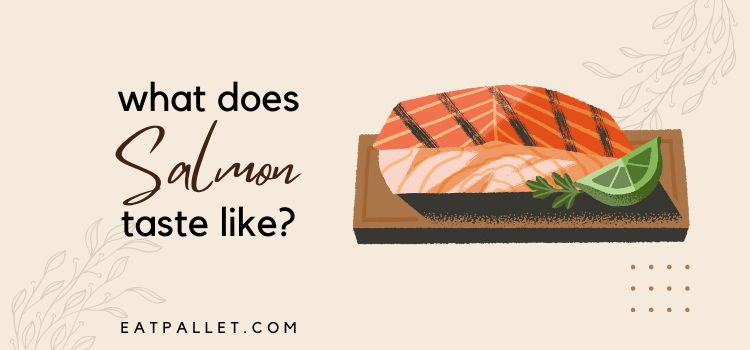
That Drive Revenue
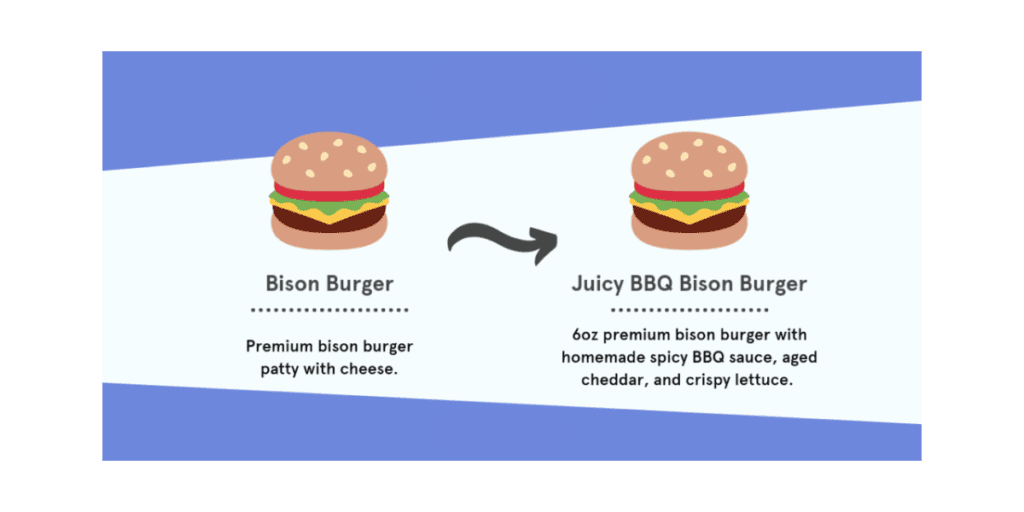
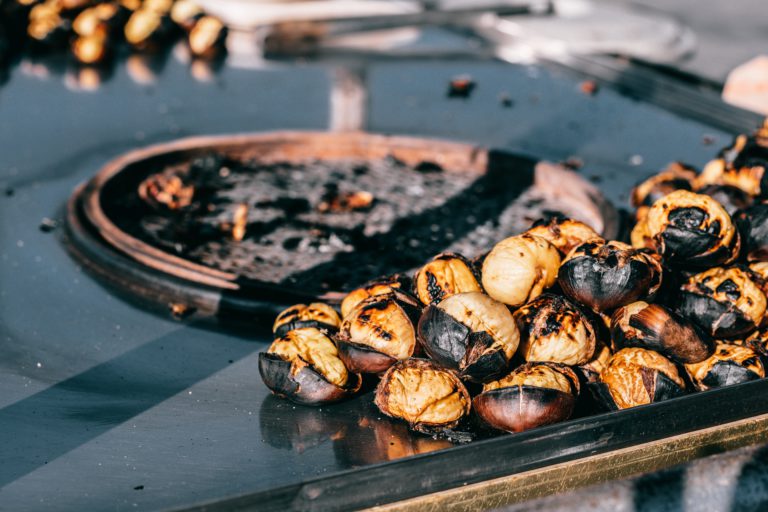
Airy: A light, pillowy texture often created by the incorporation of air.
Buttery: A smooth and creamy texture similar to that of butter.
Chewy: The texture of a food that needs to be chewed thoroughly before swallowing. Can be light and bouncy or heavy and sticky.
Creamy: A smooth and rich texture that usually comes from the incorporation of dairy.
Crispy: A light texture with a slight crunch.
Crumbly: The texture of food with a loose structure that falls apart into small pieces or crumbs.
A firm, crisp texture that can be told apart from other foods by the sharp sound they make when they are eaten.
Crusty: The texture of food with a hard outer layer and soft interior.
Delicate: A light, fine texture that may come apart easily.
Doughy: A soft and heavy texture that is often coupled with pale colouring.
Fizzy: A texture brought on by the presence of many small bubbles, usually referring to carbonated liquids.
Flaky: A light texture characterized by layers that come apart during eating.
Fluffy: A light and airy texture.
Gooey: A viscous, sometimes sticky texture arising from the presence of moisture in a dense solid food.
Juicy: A succulent, tender texture characterized by the presence of liquid in a solid food.
Silky: A fine, smooth texture characterized by a sleek f eel in the mouth.
Sticky: A texture characterized by gluiness in the mouth.
Smooth: A consistent texture free of grit, lumps, or indentations.
Succulent: A tender, juicy texture.
Tender: A soft texture that is easy to break down.
Velvety: A smooth and rich texture.
is Writing your menu taking too long?
Let our menu
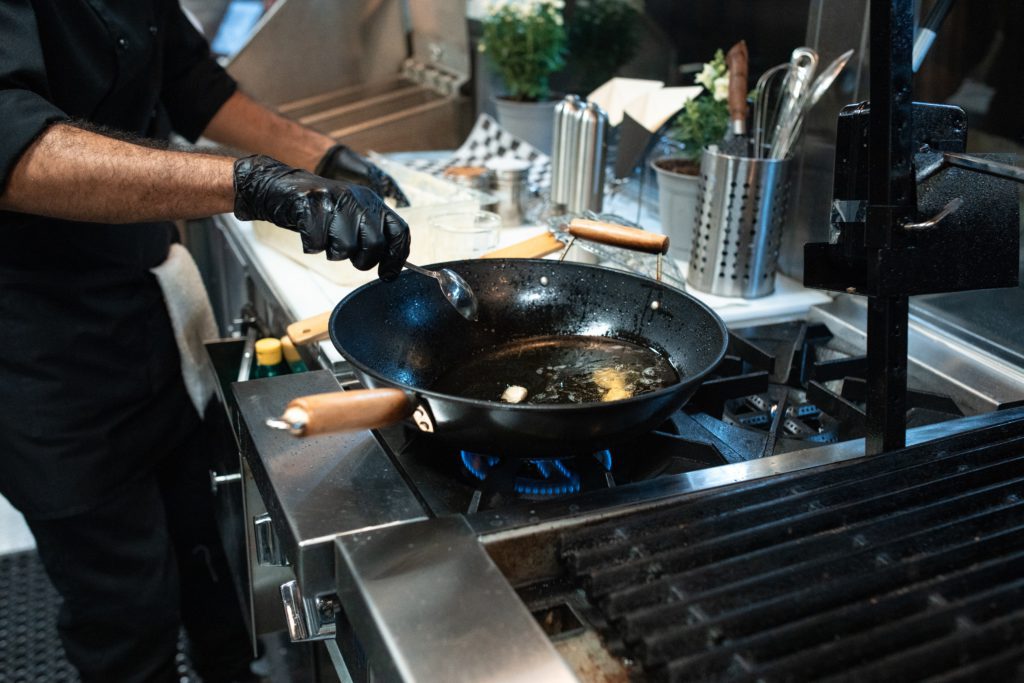
Baked: A food that was cooked in an oven, often resulting in a crispy outer coating.
Blanched: A food that was scalded in boiling water and then moved to cold water to stop cooking. Results in a softened texture.
Having a food item that looks blackened because it was dipped in butter and spiced up before being cooked in a hot pan
For a short time, food is fried in a little fat and then slowly stewed in a pot with a lid. Results in a seared, crispy exterior coupled with a tender interior texture.
Food that has been covered in a batter or breadcrumbs mixture and then baked or fried until the outside is crispy
Broiled: A food cooked with intense radiant heat, as in an oven or on a grill. Often results in a darkened appearance and crispy texture.
Caramelized: A food that has been cooked slowly until it is browned and becomes sweeter in taste.
Charred: Food that is grilled, roasted or broiled and gains a blackened exterior coupled with a smoky flavor.
Fried: Food that is cooked by submerging partially or fully into hot oil. Often results in a crispy or crunchy texture and golden color.
Glazed: A food that becomes moistened by having a flavorful coating dripped or brushed onto its surface.
A food that has been soaked in liquid with another ingredient to bring out the flavor of that ingredient
Poached: Food that has been cooked in nearly boiling liquid. Often results in a tender, moist texture.
Roasted: Food that has been cooked with dry heat in an oven or over a fire. Often results in a browned exterior and crisp coating.
Sauteed: A food that has been cooked quickly in a small amount of fat.
Food that is seared is cooked in a small amount of fat until it turns caramelized. It can then be roasted, grilled, or cooked in some other way to finish. Results in a crisp outer texture and tender interior.
Smoked: Food that is cooked or preserved by long exposure to smoke from smoldering wood. Results in a distinctive, bold flavor.
Whipped: Food that has been beaten to incorporate air. Often results in a light texture.
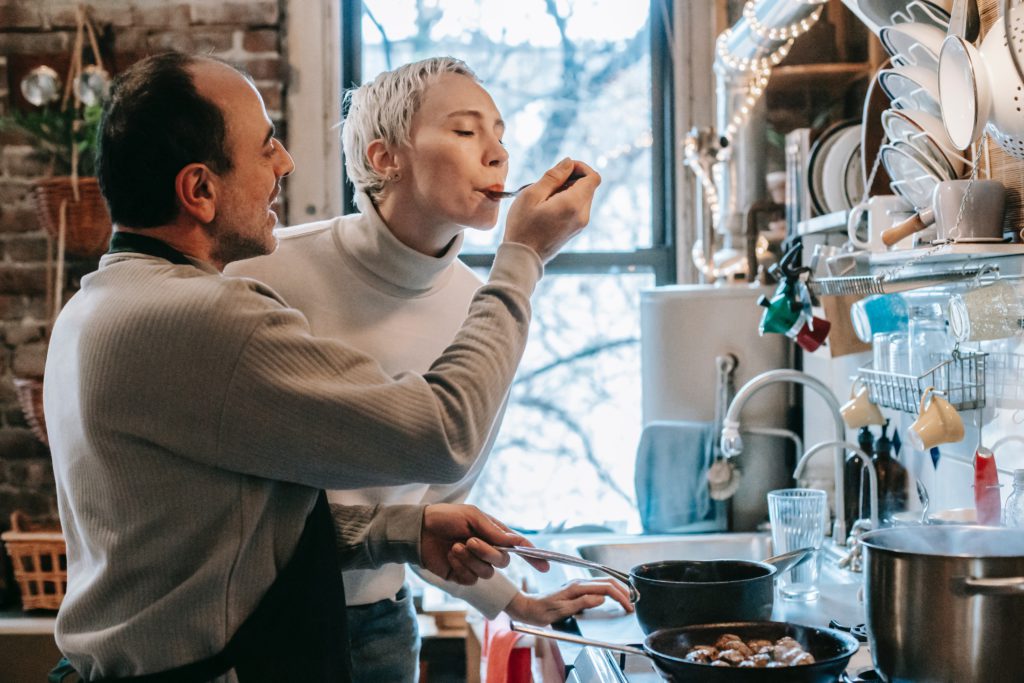
Acidic: A food with a sharp taste. Often used to refer to tart or sour foods as well.
Bitter: A tart, sharp, and sometimes harsh flavor.
Bittersweet: A less harsh taste than bitterness. Couples tartness with sweetness.
Briny: Another word for salty.
Citrusy: A bright flavor like that of lemons, limes, oranges, and other citrus fruits.
Cooling: A taste that mimics the feeling of cold temperature. Often used to describe mint.
Earthy: Reminiscent of fresh soil. Often used to describe red wines, root vegetables, and mushrooms.
Fiery: A taste that feels as though it gives off heat. Another word for spicy.
Fresh: A light and crisp taste. Often used to describe produce or herbs.
Fruity: Any taste reminiscent of sweet fruit flavours.
Full-bodied: Rich flavour that can feel heavy in the mouth. Often used to describe wines.
Herbal: A bright, fresh, or sometimes earthy taste created by the incorporation of herbs.
Honeyed: A sweet or candied taste that may be reminiscent of honey.
Nutty: Any taste similar to the flavours of nuts. Often used to describe cheeses.
Rich: A full, heavy flavour. Often used to describe foods containing cream.
Robust: A rich taste with some earthiness. Often used to describe wines or aged liquors.
Sharp: A harsh, bitter, or tart taste. Often used to describe acidic foods.
Smoky: A taste reminiscent of the smell of smoke.
Sour: A biting, tangy, tart flavour.
Spicy: A burning taste from hot spices.
Sweet: A sugary flavour.
Tangy: A tart, biting taste that feels tingly in the mouth.
Tart: A sharp, bitter, or sour flavour. Often used to describe acidic foods.
Yeasty: An earthy taste reminiscent of yeast. Often used to describe beer and breads.
Woody: An earthy, sometimes nutty taste. Often used to describe coffees or cheeses.
Zesty: A fresh, vivid, or invigorating flavour.
Dry vs. crispy: Chicken with a dry breading compared to Chicken with a crispy breading
Greasy vs. velvety: Pasta in a greasy sauce compared to Pasta in a velvety sauce
Sugary vs. honeyed: Pears with a sugary drizzle compared to Pears with a honeyed drizzle
Burned vs. blackened: Burned salmon compared to Blackened salmon
Tough vs. hearty: A piece of tough bread compared to A piece of hearty bread
Mushy vs. tender: A mushy crabcake compared to A tender crabcake
Words To Describe Food & Drink
FAQ
How do you describe salmon?
What is the description of the taste of salmon?
How would you describe well cooked salmon?
What does salmon taste like?
The sweetness in salmon comes from its natural sugars, which give it a slightly sweet taste. This sweetness is most prominent in fresh salmon, which has not been frozen or smoked. Umami is the fifth taste sensation, which is often described as savory, meaty, or brothy. Salmon has a subtle umami flavor that comes from its high protein content.
What to eat with salmon?
When the flavors of a savory salmon poke bowl crash land on a slice of avocado toast, you’ve got a lunchtime power player on your hands. Crispy salmon skin, crunchy fennel salad, and creamy tahini yogurt make this a texture-seeker’s dream dinner. Achieve the flaky fish and crispy skin of your dreams with these tried-and-true recipes.
How do you describe a fish dish?
Instead of simply stating that a dish is “delicious” or “tasty,” try to use specific adjectives and adverbs that evoke a sensory experience. By using words that describe the texture, aroma, and flavor of fish, you can create a vivid and engaging description that truly captures the essence of the dish.
How do you write a fish menu?
Use sensory words like “buttery,” “flaky,” or “crispy” to make your customers’ mouths water. Additionally, mention the type of fish, and if it’s wild-caught or sustainably farmed. Adjectives are your friend when it comes to menu writing. Use them to describe the seasoning or marinade on the fish.
